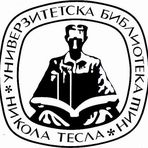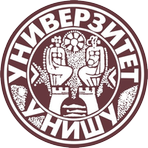Title
An approach to design of digital sliding mode control for DC-DC converters
Creator
Almawlawe, Muhanad Dheyaa Hashim 1962-
Copyright date
2017
Object Links
Select license
Autorstvo 3.0 Srbija (CC BY 3.0)
License description
Dozvoljavate umnožavanje, distribuciju i javno saopštavanje dela, i prerade, ako se navede ime autora na način odredjen od strane autora ili davaoca licence, čak i u komercijalne svrhe. Ovo je najslobodnija od svih licenci. Osnovni opis Licence: http://creativecommons.org/licenses/by/3.0/rs/deed.sr_LATN Sadržaj ugovora u celini: http://creativecommons.org/licenses/by/3.0/rs/legalcode.sr-Latn
Language
English
Cobiss-ID
Theses Type
Doktorska disertacija
description
Datum odbrane: 11.04.2018.
Other responsibilities
mentor
Mitić, Darko
član komisije
Antić, Dragan 1963-
član komisije
Nikolić, Vlastimir
član komisije
Milojković, Marko 1980-
član komisije
NIkolić, Saša S. 1982-
Academic Expertise
Tehničko-tehnološke nauke
University
Univerzitet u Nišu
Faculty
Elektronski fakultet
Group
Katedra za automatiku
Alternative title
Jedan pristup projektovanju digitalnog upravljanja s kliznim režimom za DC-DC konvertore
Publisher
[M. D. H. Almawlawe]
Format
105 listova
description
Bibliografija: listovi 89-101
description
Automatics
Abstract (en)
The primary goal of research in this Ph.D. dissertation is to investigate the possibilities of
application of modern control methods in controlling the output voltage of the DC-DC
converters (buck, boost) in order to ensure the system robustness to the input voltage and load
variations. This dissertation deals with the analysis and application of sliding mode control
algorithms in the synthesis of these converters in order to improve the properties of existing
converters and to modify them, as well as to adjust and tune the digital sliding mode controls
based on the input-output plant model to be applicable in these converters.
The design procedure is based on the converter models given in the form of discrete transfer
functions. The proposed control for converters is a combination of the digital sliding mode
control and (generalized) minimum variance control techniques. The problem caused by an
unstable zero of the boost converter, which prevents the direct control of the output voltage of
this converter, has been overcome by introducing the generalized minimum variance control.
Also, only the output voltage of converter must be measured for the realization of the proposed
control, so there is no need for an additional current sensor. This dissertation includes the
modification of the developed algorithms with the aim of applying them to low-cost, standard 8-
bit microcontrollers.
Finally, the efficiency of the proposed solutions is verified by digital simulation and a series
of experiments on the laboratory developed prototypes of both converters, as well as by their
comparative analysis. The satisfactory experimental results are obtained regarding the typical
characteristics of the converters.
Authors Key words
buck konvertor, boost konvertor, kvazi-klizni režim, digitalno upravljanje s
kliznim režimom, upravljanje (uopštene) minimalne varijanse, širinsko
impulsna modulacija, režim kontinuiranog provođenja
Authors Key words
buck converter, boost converter, quasi-sliding mode, digital sliding mode
control, (generalized) minimum variance control, pulse width modulation,
continuous conduction mode
Classification
681.5.01+681.5]:621.314.1(043.3)
Type
Elektronska teza
Abstract (en)
The primary goal of research in this Ph.D. dissertation is to investigate the possibilities of
application of modern control methods in controlling the output voltage of the DC-DC
converters (buck, boost) in order to ensure the system robustness to the input voltage and load
variations. This dissertation deals with the analysis and application of sliding mode control
algorithms in the synthesis of these converters in order to improve the properties of existing
converters and to modify them, as well as to adjust and tune the digital sliding mode controls
based on the input-output plant model to be applicable in these converters.
The design procedure is based on the converter models given in the form of discrete transfer
functions. The proposed control for converters is a combination of the digital sliding mode
control and (generalized) minimum variance control techniques. The problem caused by an
unstable zero of the boost converter, which prevents the direct control of the output voltage of
this converter, has been overcome by introducing the generalized minimum variance control.
Also, only the output voltage of converter must be measured for the realization of the proposed
control, so there is no need for an additional current sensor. This dissertation includes the
modification of the developed algorithms with the aim of applying them to low-cost, standard 8-
bit microcontrollers.
Finally, the efficiency of the proposed solutions is verified by digital simulation and a series
of experiments on the laboratory developed prototypes of both converters, as well as by their
comparative analysis. The satisfactory experimental results are obtained regarding the typical
characteristics of the converters.
“Data exchange” service offers individual users metadata transfer in several different formats. Citation formats are offered for transfers in texts as for the transfer into internet pages. Citation formats include permanent links that guarantee access to cited sources. For use are commonly structured metadata schemes : Dublin Core xml and ETUB-MS xml, local adaptation of international ETD-MS scheme intended for use in academic documents.


